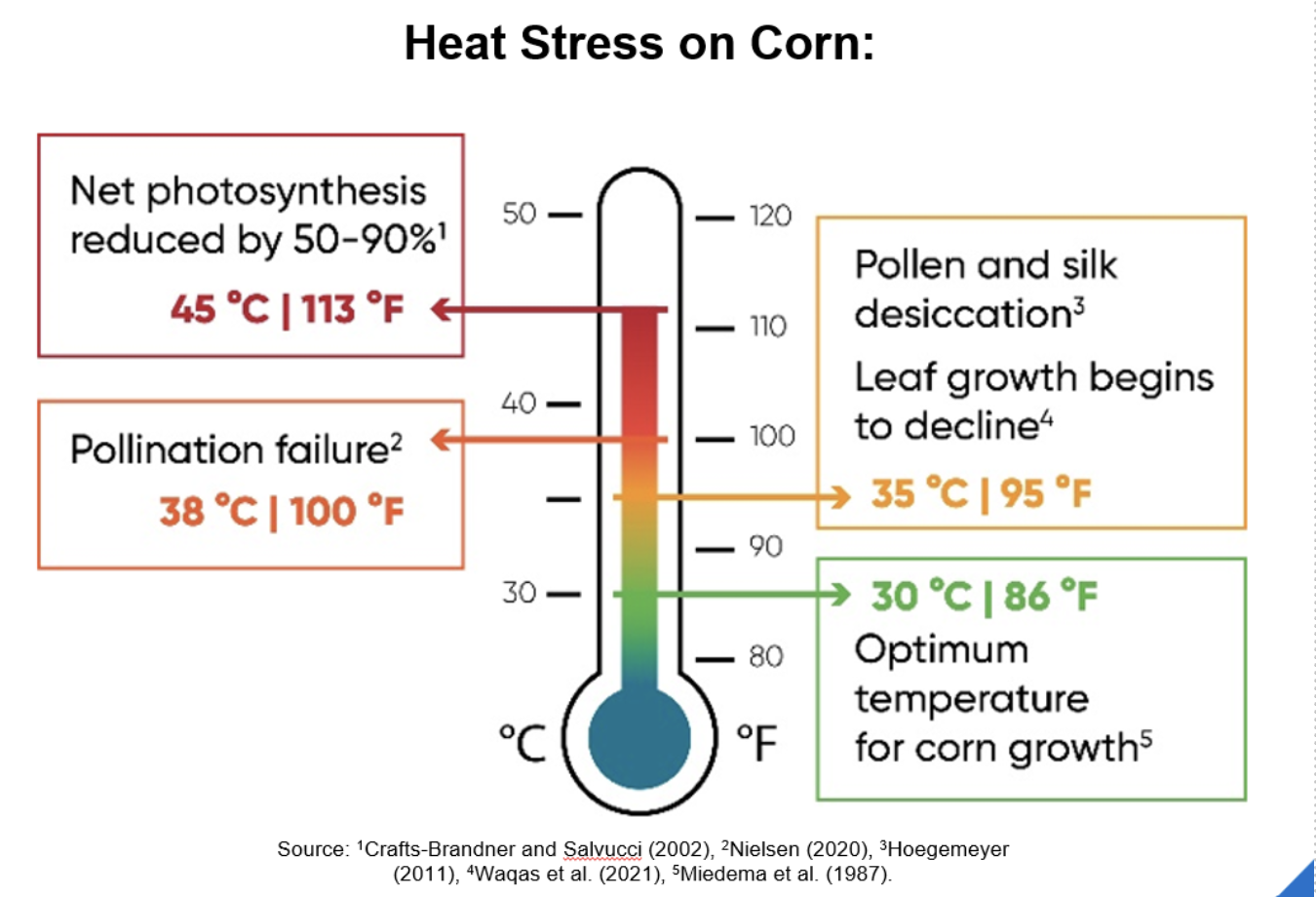Three Things Every Farmer Needs to Know About Heat Stress
Heat stress, also known as heat blast, has become a reoccurring challenge for Canadian farmers. The persistence of extremely hot summers and severe heat events has become a significant concern, prompting farmers to seek new strategies to mitigate the detrimental impact of heat stress and protect crop yields and quality, especially in corn.
Optimal growth temperatures for corn range between 25°C and 33°C. At these temperatures, both photosynthesis and respiration processes are enhanced, leading to increased energy production. As a result, plants can grow more efficiently and reach optimal growth conditions.
While warmer temperatures create ideal growing conditions for crops, if temperatures get too high, they can induce heat stress and severely impact plant growth and yield potential.
Here are three things you need to know about heat stress:
1. What is heat stress?
Heat stress refers to the damaging effects of prolonged exposure to excessively high temperatures. This environmental stressor can slow photosynthesis as the plant closes its stomata to conserve moisture.
Heat stress in corn is caused by a combination of hot days (35°C or warmer) and warm nights. When temperatures rise to these levels and plants experience heat stress and require more water from the soil. When drought conditions occur simultaneously, the lack of moisture intensifies the stress on the crop, reducing crop efficiency and limiting productivity.
2. How heat stress affects crop production
Heat stress can be harmful to corn. Visual indicators of heat stress are most noticeable when the leaves become dry and roll inwards, a condition known as tip back. While these defensive measures are taken to protect the plant from water loss during extreme heat, these protective leaf positions also reduce photosynthetic activity and restrict plant growth.
In corn, heat stress can lead to a degradation of Cytokinin, a growth hormone that is critical for cell division and differentiation. This decay often causes scorched leaves, along with delayed silk emergence and pollen desiccation. Consequently, the poor synchrony with pollen shed leads to reduced kernel numbers and reduced yield potential.
In addition to the potential degradation of Cytokinin, hot, dry conditions also significantly reduce nutrient uptake and hinder plant growth by impairing root function and limiting the plant’s ability to absorb essential nutrients.







